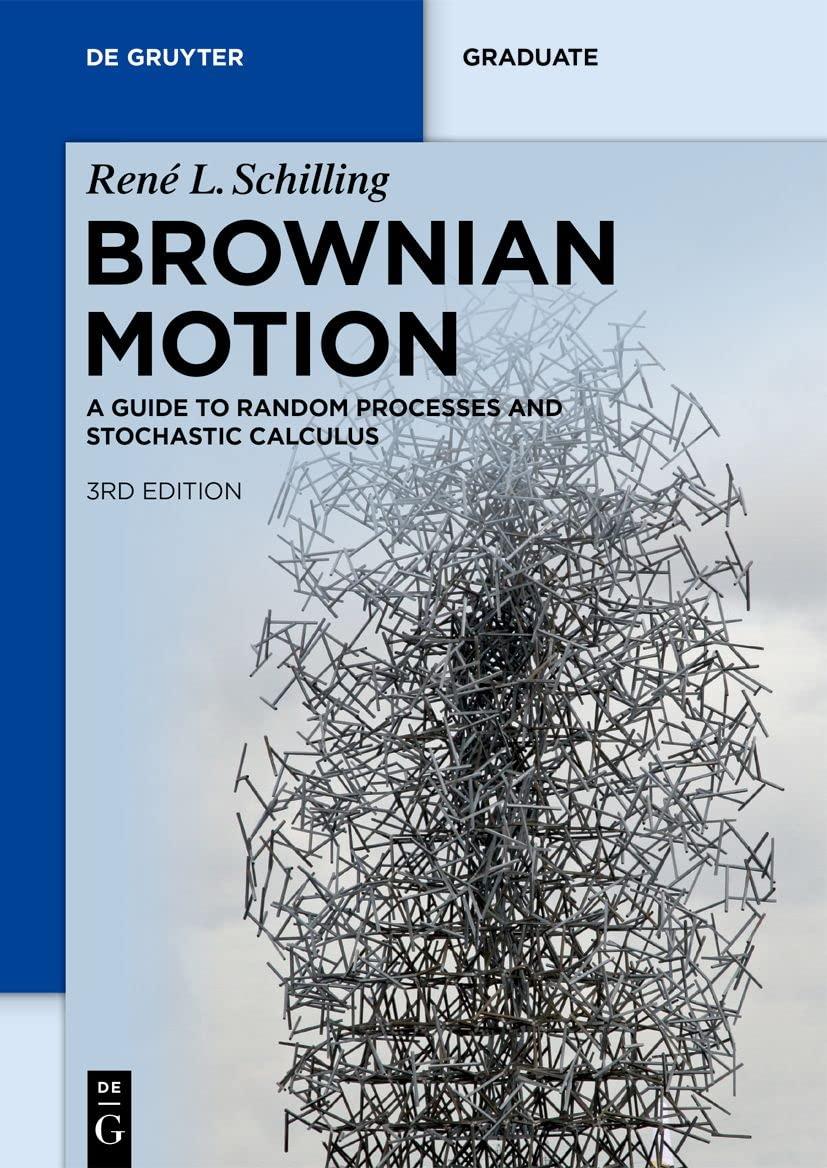Let (left(B_{t}ight)_{t geqslant 0}) be a Brownian motion on the space (left(mathcal{C}, mathscr{B}(mathcal{C}), mathbb{P}^{0}ight)). The (canonical) shift
Question:
Let \(\left(B_{t}ight)_{t \geqslant 0}\) be a Brownian motion on the space \(\left(\mathcal{C}, \mathscr{B}(\mathcal{C}), \mathbb{P}^{0}ight)\). The (canonical) shift operator is the map \(\theta_{h}: \mathcal{C} ightarrow \mathcal{C}, \theta_{h} w(\cdot)=\) \(w(\cdot+h)\), i.e. \(\left(\theta_{h} wight)(t)=w(t+h)\). Moreover, define \(\mathscr{F}_{t}=\mathscr{F}_{[0, t]}=\sigma\left(B_{s}, s \in[0, t]ight)\) and \(\mathscr{F}_{[t, \infty)}=\sigma\left(B_{s}, s \geqslant tight), \quad t \in[0, \infty]\).
If \(\sigma\) is a stopping time for \(\left(\mathscr{F}_{t}ight)_{t \geqslant 0}\) which is finite for all \(w\), the random shift is defined as \(\left(\theta_{\sigma} wight)(t):=\left(\theta_{\sigma(w)} wight)(t)=w(t+\sigma(w))\).
a) Show that \(B_{t} \circ \theta_{\sigma}(w)=B_{t+\sigma(w)}(w)\). Let \(F=\left\{B_{t} \in Cight\}\). Find \(\theta_{\sigma}^{-1} F\).
b) Show that \(\theta_{\sigma}: \mathcal{C}_{(\mathrm{o})} ightarrow \mathcal{C}_{(\mathrm{o})}\) is \(\mathscr{F}_{t+\sigma} / \mathscr{F}_{t}\) and \(\mathscr{F}_{[t+\sigma, \infty)} / \mathscr{F}_{[t, \infty)}\) measurable.
c) Let \(\tau\) be a further stopping time such that \(\tau(w)<\infty\) for all \(w\). Show that \(\sigma+\tau \circ \theta_{\sigma}\) is a \(\mathscr{F}_{t+}\) stopping time. What does \(\sigma+\tau \circ \theta_{\sigma}\) mean at the level of paths?
If you have two stopping times \(S, T\), then you can express \(\{S+T
Step by Step Answer:

Brownian Motion A Guide To Random Processes And Stochastic Calculus De Gruyter Textbook
ISBN: 9783110741254
3rd Edition
Authors: René L. Schilling, Björn Böttcher





